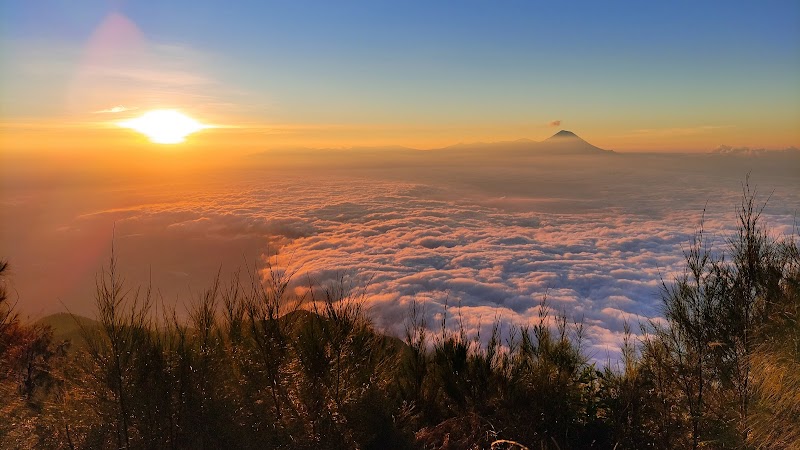
Mount Penanggungan Nature Reserve Adventures
Mount Penanggungan Nature Reserve offers a unique combination of rich biodiversity and significant archaeological sites, providing an engaging outdoor destination for hikers and history enthusiasts alike.
About Mount Penanggungan Nature Reserve

Mount Penanggungan Nature Reserve is a protected area located in East Java, Indonesia, rising to an elevation of approximately 1,694 meters. The reserve covers the volcanic mountain of Penanggungan, which holds cultural, historical, and ecological significance. This moderately sized nature reserve is home to tropical rainforest ecosystems supporting diverse flora and fauna, including endemic plant species and various bird populations typical of the Javanese highlands. Archaeological ruins scattered along its slopes date back to the Majapahit Kingdom, with numerous temple remnants, stone inscriptions, and ancient stone steps serving as visible markers of the region's historical past. Visitors to Mount Penanggungan frequently engage in hiking expeditions along established paths that gradually ascend the mountain, rewarding trekkers with panoramic views of the surrounding plains and the active volcano, Mount Arjuno. The combination of outdoor recreation and cultural landmarks makes the reserve a distinctive destination for those interested in both natural beauty and Javanese heritage. Its trails wind through tropical forest and past small waterfalls, providing habitats for monkeys, colorful birds, and a variety of insects. The climate is tropical with distinct wet and dry seasons, influencing the accessibility and visitor experience throughout the year. Though facilities are limited, the reserve's proximity to local villages and nearby towns gives visitors access to lodging, guides, and cultural experiences beyond the trailheads. Mount Penanggungan Nature Reserve offers a quiet, off-the-beaten-path hiking experience that blends nature and history in an accessible environment.
Highlights
Ancient Majapahit-era temple ruins scattered on mountain slopes
Varied tropical rainforest ecosystem with endemic bird species
Summit viewpoint offering expansive vistas of East Java's volcanic landscape
Access to small waterfalls and natural springs along hiking routes
Notable Natural Features
Majapahit Temple Ruins
Scattered throughout the mid and upper slopes, these ruins include gateways, terraces, and carvings dating to the 14th century.
Mount Penanggungan Summit
The forested summit offers panoramic views of the Arjuno-Welirang volcanic complex and the Java Sea on clear days.
Waterfall Trails
Several small waterfalls and natural springs provide serene resting spots along the hiking routes.
